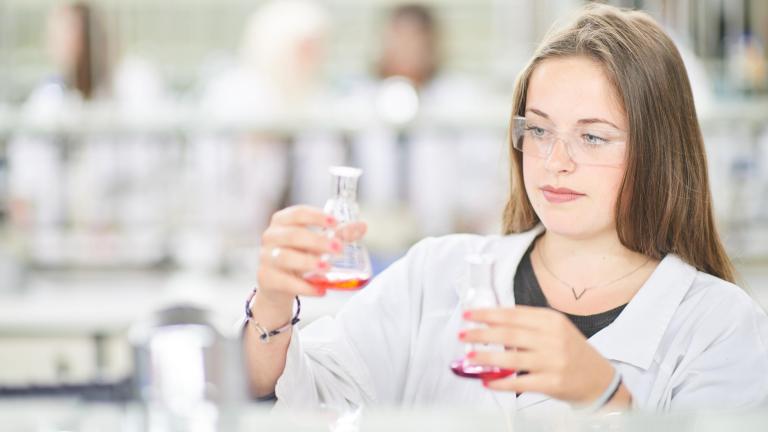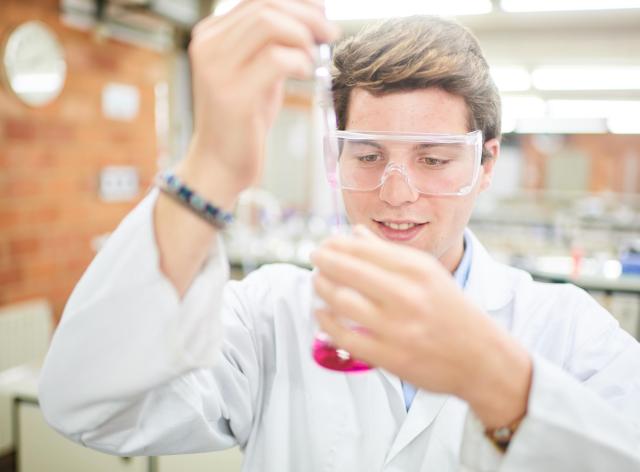La chimie est par excellence la science de la transformation de la matière et se situe de ce fait à la croisée des sciences physiques et mathématiques d'une part, et des sciences de la vie, des sciences de la terre et des sciences des matériaux d'autre part. Des laboratoires de pointe, dirigés par des chercheurs de renommée mondiale, sont dédiés à une vaste gamme de domaines, de la chimie organique à la chimie des matériaux, en passant par la chimie analytique et la chimie théorique.
Spotlight
News
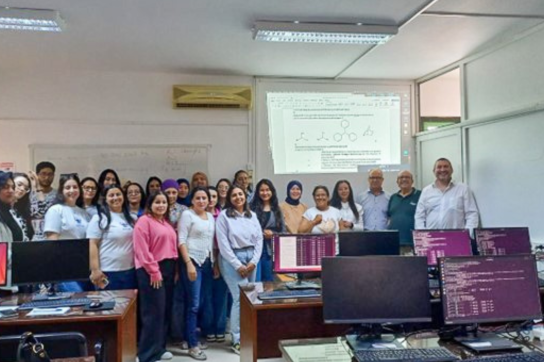
Quantum chemistry at the University of Sfax thanks to the ERASMUS+ program
Quantum chemistry at the University of Sfax thanks to the ERASMUS+ program
A practical training course in computational quantum chemistry was organized from May 26 to 30, 2025 as part of an ERASMUS+ collaboration between the University of Sfax and the University of Namur. This inter-university training course for PhD students in chemistry and physics from the Tunisian University brought together more than 20 students.
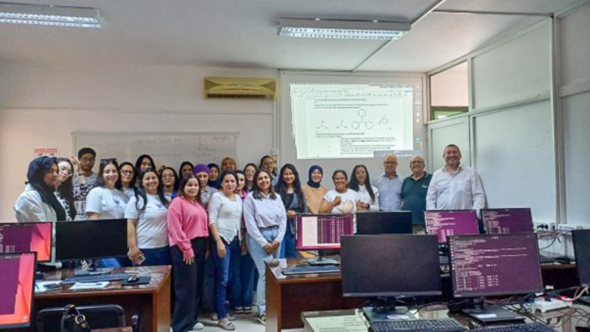
This wonderful initiative is the result of a reflection on the integration of quantum chemistry courses at the University of Sfax initiated by Professors Mahmoud TRABELSI (University of Sfax and alumnus of the University of Namur), Besma HAMDI (University of Sfax) and Benoît CHAMPAGNE (University of Namur). The reflection has been matured over the last two decades, during which time several students from Pr. TRABELSI's team have stayed at Pr. CHAMPAGNE's laboratory.
The aim: to add a computational quantum chemistry component to their research into synthetic chemistry, including syntheses from biobased substances.
A PhD student in chemistry at the University of Sfax, Dhouha ABEIRA, is also involved in the project. She is doing an ERASMUS+ internship in Pr. CHAMPAGNE's laboratory to study the optical properties of molecular crystals.
The program
Students were introduced to the calculation of reaction energies and the simulation of UV/visible absorption spectra. These two applications are typical of activities in quantum chemistry, as they are directly linked to the understanding of reaction phenomena and the development of new compounds for molecular optics.
Emphasis has also been placed on certain technical aspects of the calculations in order to train students in the development of computational protocols according to the questions addressed.
The teaching team
The courses were delivered by an inter-university team.
For the Department of Chemistry at the University of Namur:
- Professor Benoît CHAMPAGNE, Director of the Laboratoire de Chimie Théorique (LCT) of the Unité de Chimie Physique Théorique et Structurale (UCPTS);
- Dr. Vincent LIÉGEOIS, for remote IT support and whose suite of programs DrawSuite, a series of applications designed to provide tools for analyzing molecular structures and properties, was much appreciated;
- Frédéric WAUTELET of the Plateforme Technologique de Calcul Intensif (PTCI) for remote computing support and who has prepared a cluster (pleiades) dedicated to training.
For the University of Sfax Chemistry Department:
- The Dr. Mohamed CHELLEGUI, from the organic chemistry laboratory, for preparing practical work;
- Dhouha ABEIRA, PhD student in chemistry, for preparing practical work and assisting students from Sfax.
The teaching teams warmly thank the International Relations teams at the University of Namur and the University of Sfax for their help in setting up and monitoring the ERASMUS+ project.
Chemistry studies at the University of Namur
The "chemists" who specialize in the reactivity of matter cultivate the art of experimentation and discovery. The products of their essential knowledge are applied in the fields of nutrition, health, hygiene, transport, sport, construction and environmental protection.
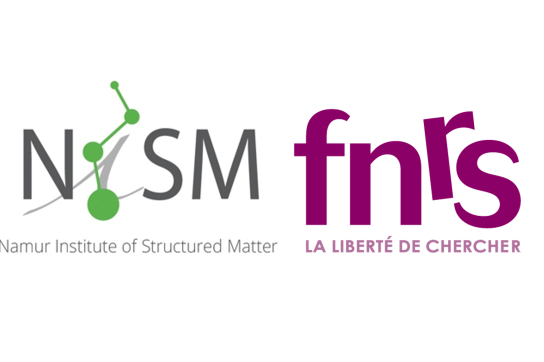
FNRS 2024 calls: Focus on the NISM Institute
FNRS 2024 calls: Focus on the NISM Institute
Several researchers at the Namur Institute of Structured Matter (NISM) have recently been awarded funding from the F.R.S - FNRS following calls whose results were published in December 2024. The NISM Institute federates the research activities of the chemistry and physics departments of the University of Namur.
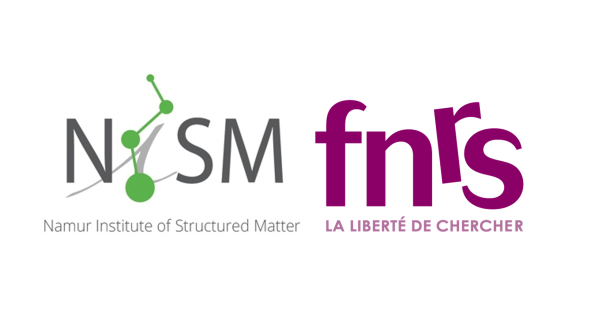
Luca Fusaro: "Crystallization of complex phases in confined space
The aim of this FNRS-funded research project (PDR) is to deepen knowledge of the complex crystalline phases of simple salts. The project aims to strengthen international research activities, which began in 2016 and led to the publication of the first results in Nature in 2021. Read the article online...
In this study, the researchers had isolated four different crystalline phases from a salt of Fampridine, an organic compound used to treat the symptoms of multiple sclerosis. Two crystalline phases showed remarkable complexity, belonging to the special class of Frank and Kasper (FK) phases.
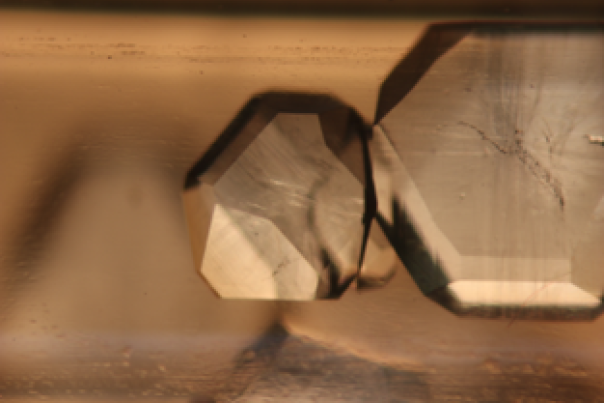
FK phases have been known since 1959 as a large family of metal alloys, but the study demonstrated that simple pharmaceutical molecules can crystallize with similar complexity, something not previously known.
With this new project, the researchers aim to go one step further, using mainly solid-state nuclear magnetic resonance (NMR) and X-ray diffraction (XRD) techniques on powders and single crystals. This study will be carried out in collaboration with other researchers at the NISM Institute (Nikolay Tumanov, Carmela Aprile and Johan Wouters), as well as collaborators working in other countries, such as Riccardo Montis (University of Urbino, Italy) and Simon Coles (Director of the National Crystallography Service (NCS), University of Southampton, UK).
Stéphane Vincent (with UCLouvain): "NPN cofactor synthesis and roles".
The research project (PDR) "NPN cofactor synthesis and roles" is at the interface between fundamental biochemistry and enzymology. It is based on the recent discovery, by a team at UCLouvain, of a new cofactor, named NPN, with a highly original structure. It is a dinucleotide bearing a nickel complex. It is involved in important enzymatic reactions, but little is known about its reactivity, biosynthesis and mechanism of action. Moreover, it is present in 20% of bacterial genomes and 50% of Archaea (archaeobacteria) genomes, but only a tiny fraction of the enzymes employing it have been characterized.
The research project is based on the complementary expertise of Benoit Desguin (UCLouvain, biochemistry) and Stéphane Vincent (bio-organic chemistry). The main aim of the project is to understand the role and mechanism of this cofactor through biochemical, structural and kinetic studies. Analogues of the NPN cofactor will be synthesized by the UNamur team: they will be designed to elucidate the mode of interaction and reaction of the NPN cofactor with the enzymes employing it.
Johan Wouters (with UCLouvain): "Crystallization-based deracémisation in the era of green chemistry".
This research project (PDR) is a co-promotion of Professors Tom Leyssens (UCLouvain) and Johan Wouters (UNamur). It aims to bring the process of uprooting by crystallization into the era of "green chemistry".
Uprooting is a term used in chemistry to describe the process of separating a racemic mixture into its two enantiomers, i.e. the chiral (left and right) forms of a molecule. In the pharmaceutical industry, 50% of marketed drug compounds contain a chiral center, which is essential to their functioning. When one enantiomer has the desired pharmacological effect, the other may be inactive or have undesirable effects. For this reason, new drugs are often marketed as enantiopure compounds (i.e. free of their impure "chiral twin").
The most common way of obtaining chiral drugs still involves the formation of a racemic mixture. This can then be produced by chemical or physical separation techniques, with a yield loss of 50%. If the compound in question is "racemizable", the unwanted enantiomer can technically be converted back into a racemic mixture, resulting in a theoretical yield of 100%. Over the past decade, various crystallization-based uprooting methodologies have been developed. However, all these methods require the use of large quantities of solvent, as they are crystallization processes.
This research aims to take these processes to the next level, not only by making them more efficient (less time-consuming), but also by bringing them into the realm of "green chemistry". To this end, the researchers are proposing mechanochemical variants for conglomerates and racemic compounds.
These processes will be
- Inherently "green", since the unwanted enantiomer is transformed into the desired enantiomer;
- Enabled by mechanochemistry, which eliminates the need for solvent, making them "greener" than solution-based methods.
- The "greenest" possible, thanks to their efficiency (very fast timescale and low energy consumption).
Catherine Michaux, Stéphane Vincent and Guillaume Berionni were awarded equipment financing (EQP).
This funding will enable the acquisition of high-throughput isothermal titration calorimetry (ITC) equipment, unique in the Wallonia-Brussels Federation. This is a high-resolution, non-destructive method enabling complete characterization of the chemical details of an interaction in solution.
His acquisition will enable UNamur chemists, but also their collaborators, to analyze any bond, in a vast field of application, extending from biochemistry to supramolecular chemistry.
FRIA doctoral scholarship - Noah Deveaux (PI - Benoît Champagne)
"ONL molecular switches "in all their states": from solutions to functionalized surfaces and solids."
This PhD thesis within the Theoretical Chemistry Laboratory (Department of Chemistry) and the Multiscale Modeling through High-Performance Computing (HPC-MM) Cluster of the NISM Institute aims to develop innovative multiscale computational methodologies to study and optimize multistate and multifunctional molecular switches, key components of logic devices and new generations of data storage technologies.
In addition to variations in linear optical responses, it is advantageous to consider changes in nonlinear optical responses (NLOs), which enable high-resolution data readout while avoiding their destruction. The main objective is to predict and interpret the ONL responses of these molecular switches in different matter environments, namely in solution, grafted onto surfaces and in the solid state.
In addition, particular attention will be paid to modeling defects and orientational disorder within materials to better represent real-world conditions. These predictive methods will be validated experimentally through close collaborations with synthesis and characterization teams.
FNRS, la liberté de chercher
Chaque année, le F.R.S.-FNRS lance des appels pour financer la recherche fondamentale. Il a mis en place une gamme d'outils permettant d’offrir à des chercheurs, porteurs d’un projet d’excellence, du personnel scientifique et technique, de l’équipement et des moyens de fonctionnement.
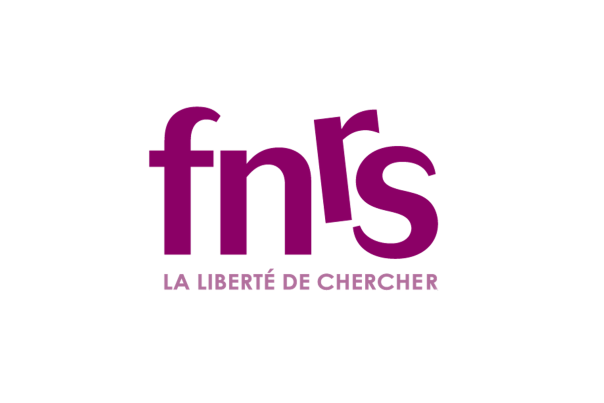
The NISM Institute
Research at NISM revolves around a variety of research topics in organic chemistry, physical chemistry, (nano)-materials chemistry, surface science, optics and photonics, solid-state physics, both from a theoretical and experimental point of view.
Researchers' expertise is recognized in the synthesis and functionalization of molecular systems and innovative materials, from 0 to 3 dimensions.
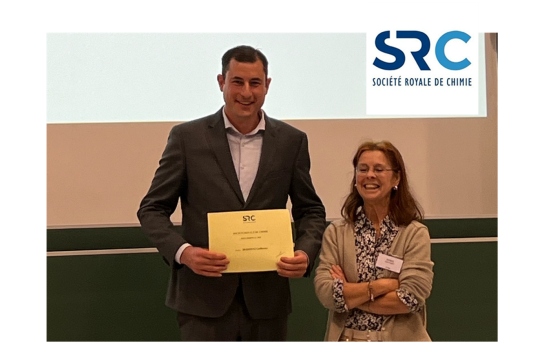
Guillaume Berionni receives the CRS Triennial Award
Guillaume Berionni receives the CRS Triennial Award
In October 2024, Guillaume Berionni, a researcher in the Department of Chemistry at the University of Namur, received the Royal Society of Chemistry's (RSC) triennial prize from its President, Professor Anne-Sophie Duwez. A fine reward for his research team in organometallic reactivity and catalysis (RCO), but also for our institution and its Department of Chemistry.
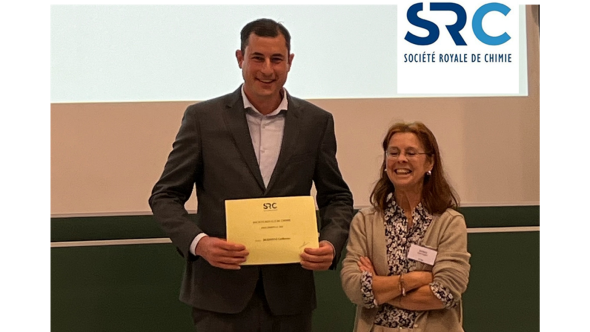
The RSC Triennial Prize is intended to honor a researcher in full scientific bloom whose work receives an international audience and is considered seminal.
Since 1969, this prize has rewarded numerous chemists recognized in Belgium and particularly from UNamur since 3 other members of the Department have already received it: Jean-Marie André (1984); Benoît Champagne (2002) and Johan Wouters (2008).
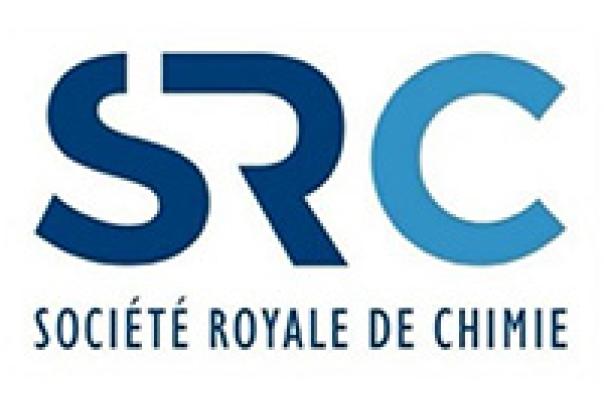
The research team
These research topics, which Professor Guillaume Berionni's Laboratoire de Réactivité et Catalyse Organométallique (RCO) team is working on, are located at the frontier between organic, organometallic, heterochemistry (Group 13 and 14 elements), and coordination chemistry, and are advancing the development of new concepts in homogeneous catalysis.
These research projects are financed by various funding bodies, including the FNRS, the European Union via the ERC, or the Wallonia-Brussels Federation.
Guillaume Berionni is also a member of the Namur Institute of Structured Matter - NISM (Pôle FSM). He currently leads a research team of 14 PhD students, post-docs and master's students.
A year after receiving prestigious funding from the European Research Council (ERC) for his B-Yond project, Prof Guillaume Berionni was appointed a Fellow of the prestigious European chemistry society Chemistry Europe in early 2024. This distinction makes him the new representative for Belgium for a period of 2 years.
Congratulations to him and his team!
Read our previous articles
- Guillaume Berionni Belgian representative at the European Chemical Society: Read article...
- An ERC Consolidator fellowship for Guillaume Berionni's B-YOND project: Read article...
The 1st MG-ERC conference
From September 10 to 12, 2025, the 1st MG-ERC conference will take place. The Main-Group Elements Reactivity Conference (MG-ERC) is a new meeting, created to bring together researchers working in the fields of main-group chemistry, coordination chemistry and inorganic chemistry to discuss new concepts, ideas and trends in these dynamic fields, and to establish links and collaborations.
Studying chemistry at UNamur
Now known as ‘chemists’, specialists in the reactivity of matter pursue the art of experimentation and discovery. The products of their essential knowledge are applied in the fields of nutrition, health, hygiene, transport, sport, construction and environmental protection.

Jean-Marie Lehn, Nobel Prize in Chemistry: "Science defines the future of humanity".
Jean-Marie Lehn, Nobel Prize in Chemistry: "Science defines the future of humanity".
In January 2023, an international symposium on organic chemistry was held at UNamur in honour of the 80th birthday of Professor Emeritus Alain Krief. A scientific day with six renowned speakers, including Professor Jean-Marie Lehn, 1987 Nobel Prize in Chemistry. Interview.
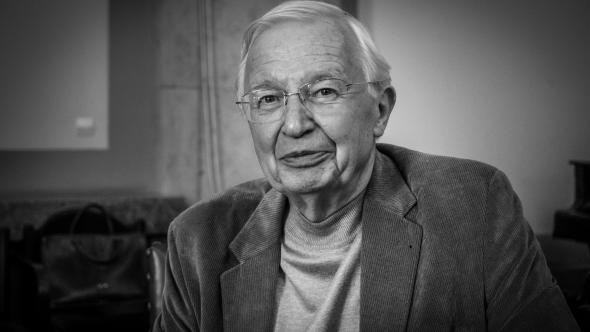
Cet article est tiré de la rubrique "L'invité" du magazine Omalius de juin 2023.
Omalius : Quelle est votre plus grande réalisation ?
Jean-Marie Lehn : À ce stade, je dirais la conceptualisation du domaine de la chimie supramoléculaire (voir encart ci-dessous). Celle-ci a toujours existé. Mais à un moment donné, il a fallu conceptualiser et découvrir certains des mécanismes des effets supramoléculaires.
O. : Qu’entendez-vous par « effets supramoléculaires » ?
J.-M.L. : C’est la façon dont les molécules s’assemblent, se comportent lorsqu’elles sont mélangées en phase condensée. Un verre d’eau, par exemple, peut bouillir ou bien geler, alors qu’une molécule isolée ne peut faire ni l’un, ni l’autre. C’est l’ensemble des molécules d’eau avec les interactions entre elles qui donne lieu à des propriétés que l’on peut appeler « émergentes ». Au fur à mesure que le niveau de complexité augmente, de nouvelles propriétés surgissent.
On peut ainsi considérer que la propriété la plus haute en valeur absolue, c’est la pensée. Certes, il y a beaucoup à apprendre sur le fonctionnement la pensée. Mais plus il y a de complexité, plus des propriétés plus complexes apparaissent. Elles ne sont pas réduites à leurs composants, notamment la pensée aux molécules formant le cerveau mais en sont déduites par augmentation progressive du niveau de complexité.
O. : Quel rôle jouera la chimie dans le monde de demain par rapport aux crises énergétiques ?
J.-M.L. : Il me semble qu’il faut prendre l’énergie là où il y en a. L’énergie détermine tout le reste. Il faut mobiliser toutes les sources. Tout d’abord, utiliser l’eau, le vent, le soleil, la terre (l’hydroélectrique, les éoliennes, le photovoltaïque, la géothermie). Et évidemment, s’y ajoute l’énergie nucléaire qui représente un apport crucial. Comme beaucoup d’autres personnes, je suis en faveur de la mise en œuvre et du développement de l’énergie nucléaire, bien gérée et utilisée.
La chimie quant à elle contribue énormément aux matériaux utilisés dans les énergies dites renouvelables et bien sûr dans la fabrication des batteries dont leur mise en œuvre dépend.
Récemment, j’ai demandé à un chauffeur de taxi quel était le poids de la batterie de sa voiture électrique. Elle pesait 600 kg, c’est-à-dire qu’en baladant une personne, il en transportait en réalité 10. Ce n’est pas soutenable ! Il va falloir que l’on trouve des batteries beaucoup plus efficaces. Nous avions d’ailleurs travaillé pendant 10 ans sur la photo-décomposition de l’eau au moment de la première crise pétrolière en 1974. Des résultats fondamentaux intéressants ont été obtenus et des progrès ont été réalisés, mais il faut arriver à une situation qui puisse être économiquement viable.
O. : Que vous a apporté le Prix Nobel personnellement ?
J.-M.L. : L’attribution du Prix Nobel repose sur de multiples nominations et donne à penser que vous avez fait une contribution importante dans un certain domaine de la science. Évidemment, c’est une satisfaction. Par ailleurs, il faut dire que de nombreux scientifiques qui auraient pu l’avoir ne l’ont pas obtenu. Je pense notamment à Mendeleïev et son système de classification des éléments au milieu du 19ème siècle.
O. : Quel est votre regard sur la chimie à l’UNamur et sur la nouvelle génération ?
J.-M.L. : Un département relativement petit mais très actif ! Je ne connais pas tout le monde mais les recherches que l’on y mène sont de haut niveau.
O. : Un message pour la génération future ?
J.-M.L. : Je dis souvent que la science définit l’avenir de l’humanité. Il est crucial de renforcer l’éducation en science et l’esprit scientifique. Avec les fakes news, on serait tenté de croire n’importe quoi. Mais il faut plutôt admettre que l’on ne peut pas toujours tout savoir, même si cela est une idée inconfortable. La science est elle-même très inconfortable, car la certitude absolue n’existe pas.
Je pense que la science continuera à guider l’humanité vers le futur, mais au-delà des découvertes et des applications pratiques, c’est surtout l’esprit et la démarche scientifique qui sont importants.
Essayez d’y participer et même si vous avez une profession autre que celle de scientifique, tentez de garder un esprit suffisamment critique pour ne pas vous faire embobiner. Acceptez que l’on puisse ne pas tout savoir.
La nature a créé beaucoup de choses au cours de l’évolution, mais il y a encore de nombreuses autres possibilités à explorer. Nous ne sommes pas parfaits tels que l’évolution nous a rendus aujourd’hui. Grâce à la science, nous allons pouvoir prendre le relais et continuer à faire évoluer l’humanité. C’est à cela que s’intéresse ce que l’un nomme le transhumanisme, mais il s’agit de définir ce que l’on entend par ce terme…
Auteur : Karin Derochette
Chimie supramoléculaire
La chimie supramoléculaire est une des branches de la chimie qui repose sur les interactions faibles (dites non-covalentes) entre atomes au sein d’une molécule ou entre molécules, au sein d’un ensemble moléculaire. Son objectif est de comprendre ou de construire des édifices de taille nanométrique. Le principe est d’utiliser des briques moléculaires qui, une fois mélangées en solution, dans des conditions contrôlées, s’autoassemblent pour donner des édifices plus complexes. L’étude des interactions non-covalentes et des relations entre fonction et structure sont à la base de la compréhension des systèmes biologiques. Le monde biologique est souvent une source d’inspiration dans la modélisation d’assemblages supramoléculaires.
Quelques applications
- Science des matériaux
- Catalyse
- Médecine
- Chimie verte
Jean-Marie Lehn - CV express
- Né le 30 septembre 1939 à Rosheim (France)
- Chimiste français spécialiste de la chimie supramoléculaire et à l’origine de travaux fondateurs sur l’auto-organisation.
- Co-lauréats avec Donald J. Cram et Charles J. Pedersen du prix Nobel de chimie de 1987 « pour leur élaboration et leur utilisation de molécules exerçant, du fait de leurs structures, des interactions hautement sélectives ».
Cet article est tiré de la rubrique "L'invité" du magazine Omalius#29 (Juin 2023).
Vous désirez recevoir Omalius au format papier ? Rien de plus simple !

Quantum chemistry at the University of Sfax thanks to the ERASMUS+ program
Quantum chemistry at the University of Sfax thanks to the ERASMUS+ program
A practical training course in computational quantum chemistry was organized from May 26 to 30, 2025 as part of an ERASMUS+ collaboration between the University of Sfax and the University of Namur. This inter-university training course for PhD students in chemistry and physics from the Tunisian University brought together more than 20 students.

This wonderful initiative is the result of a reflection on the integration of quantum chemistry courses at the University of Sfax initiated by Professors Mahmoud TRABELSI (University of Sfax and alumnus of the University of Namur), Besma HAMDI (University of Sfax) and Benoît CHAMPAGNE (University of Namur). The reflection has been matured over the last two decades, during which time several students from Pr. TRABELSI's team have stayed at Pr. CHAMPAGNE's laboratory.
The aim: to add a computational quantum chemistry component to their research into synthetic chemistry, including syntheses from biobased substances.
A PhD student in chemistry at the University of Sfax, Dhouha ABEIRA, is also involved in the project. She is doing an ERASMUS+ internship in Pr. CHAMPAGNE's laboratory to study the optical properties of molecular crystals.
The program
Students were introduced to the calculation of reaction energies and the simulation of UV/visible absorption spectra. These two applications are typical of activities in quantum chemistry, as they are directly linked to the understanding of reaction phenomena and the development of new compounds for molecular optics.
Emphasis has also been placed on certain technical aspects of the calculations in order to train students in the development of computational protocols according to the questions addressed.
The teaching team
The courses were delivered by an inter-university team.
For the Department of Chemistry at the University of Namur:
- Professor Benoît CHAMPAGNE, Director of the Laboratoire de Chimie Théorique (LCT) of the Unité de Chimie Physique Théorique et Structurale (UCPTS);
- Dr. Vincent LIÉGEOIS, for remote IT support and whose suite of programs DrawSuite, a series of applications designed to provide tools for analyzing molecular structures and properties, was much appreciated;
- Frédéric WAUTELET of the Plateforme Technologique de Calcul Intensif (PTCI) for remote computing support and who has prepared a cluster (pleiades) dedicated to training.
For the University of Sfax Chemistry Department:
- The Dr. Mohamed CHELLEGUI, from the organic chemistry laboratory, for preparing practical work;
- Dhouha ABEIRA, PhD student in chemistry, for preparing practical work and assisting students from Sfax.
The teaching teams warmly thank the International Relations teams at the University of Namur and the University of Sfax for their help in setting up and monitoring the ERASMUS+ project.
Chemistry studies at the University of Namur
The "chemists" who specialize in the reactivity of matter cultivate the art of experimentation and discovery. The products of their essential knowledge are applied in the fields of nutrition, health, hygiene, transport, sport, construction and environmental protection.

FNRS 2024 calls: Focus on the NISM Institute
FNRS 2024 calls: Focus on the NISM Institute
Several researchers at the Namur Institute of Structured Matter (NISM) have recently been awarded funding from the F.R.S - FNRS following calls whose results were published in December 2024. The NISM Institute federates the research activities of the chemistry and physics departments of the University of Namur.

Luca Fusaro: "Crystallization of complex phases in confined space
The aim of this FNRS-funded research project (PDR) is to deepen knowledge of the complex crystalline phases of simple salts. The project aims to strengthen international research activities, which began in 2016 and led to the publication of the first results in Nature in 2021. Read the article online...
In this study, the researchers had isolated four different crystalline phases from a salt of Fampridine, an organic compound used to treat the symptoms of multiple sclerosis. Two crystalline phases showed remarkable complexity, belonging to the special class of Frank and Kasper (FK) phases.

FK phases have been known since 1959 as a large family of metal alloys, but the study demonstrated that simple pharmaceutical molecules can crystallize with similar complexity, something not previously known.
With this new project, the researchers aim to go one step further, using mainly solid-state nuclear magnetic resonance (NMR) and X-ray diffraction (XRD) techniques on powders and single crystals. This study will be carried out in collaboration with other researchers at the NISM Institute (Nikolay Tumanov, Carmela Aprile and Johan Wouters), as well as collaborators working in other countries, such as Riccardo Montis (University of Urbino, Italy) and Simon Coles (Director of the National Crystallography Service (NCS), University of Southampton, UK).
Stéphane Vincent (with UCLouvain): "NPN cofactor synthesis and roles".
The research project (PDR) "NPN cofactor synthesis and roles" is at the interface between fundamental biochemistry and enzymology. It is based on the recent discovery, by a team at UCLouvain, of a new cofactor, named NPN, with a highly original structure. It is a dinucleotide bearing a nickel complex. It is involved in important enzymatic reactions, but little is known about its reactivity, biosynthesis and mechanism of action. Moreover, it is present in 20% of bacterial genomes and 50% of Archaea (archaeobacteria) genomes, but only a tiny fraction of the enzymes employing it have been characterized.
The research project is based on the complementary expertise of Benoit Desguin (UCLouvain, biochemistry) and Stéphane Vincent (bio-organic chemistry). The main aim of the project is to understand the role and mechanism of this cofactor through biochemical, structural and kinetic studies. Analogues of the NPN cofactor will be synthesized by the UNamur team: they will be designed to elucidate the mode of interaction and reaction of the NPN cofactor with the enzymes employing it.
Johan Wouters (with UCLouvain): "Crystallization-based deracémisation in the era of green chemistry".
This research project (PDR) is a co-promotion of Professors Tom Leyssens (UCLouvain) and Johan Wouters (UNamur). It aims to bring the process of uprooting by crystallization into the era of "green chemistry".
Uprooting is a term used in chemistry to describe the process of separating a racemic mixture into its two enantiomers, i.e. the chiral (left and right) forms of a molecule. In the pharmaceutical industry, 50% of marketed drug compounds contain a chiral center, which is essential to their functioning. When one enantiomer has the desired pharmacological effect, the other may be inactive or have undesirable effects. For this reason, new drugs are often marketed as enantiopure compounds (i.e. free of their impure "chiral twin").
The most common way of obtaining chiral drugs still involves the formation of a racemic mixture. This can then be produced by chemical or physical separation techniques, with a yield loss of 50%. If the compound in question is "racemizable", the unwanted enantiomer can technically be converted back into a racemic mixture, resulting in a theoretical yield of 100%. Over the past decade, various crystallization-based uprooting methodologies have been developed. However, all these methods require the use of large quantities of solvent, as they are crystallization processes.
This research aims to take these processes to the next level, not only by making them more efficient (less time-consuming), but also by bringing them into the realm of "green chemistry". To this end, the researchers are proposing mechanochemical variants for conglomerates and racemic compounds.
These processes will be
- Inherently "green", since the unwanted enantiomer is transformed into the desired enantiomer;
- Enabled by mechanochemistry, which eliminates the need for solvent, making them "greener" than solution-based methods.
- The "greenest" possible, thanks to their efficiency (very fast timescale and low energy consumption).
Catherine Michaux, Stéphane Vincent and Guillaume Berionni were awarded equipment financing (EQP).
This funding will enable the acquisition of high-throughput isothermal titration calorimetry (ITC) equipment, unique in the Wallonia-Brussels Federation. This is a high-resolution, non-destructive method enabling complete characterization of the chemical details of an interaction in solution.
His acquisition will enable UNamur chemists, but also their collaborators, to analyze any bond, in a vast field of application, extending from biochemistry to supramolecular chemistry.
FRIA doctoral scholarship - Noah Deveaux (PI - Benoît Champagne)
"ONL molecular switches "in all their states": from solutions to functionalized surfaces and solids."
This PhD thesis within the Theoretical Chemistry Laboratory (Department of Chemistry) and the Multiscale Modeling through High-Performance Computing (HPC-MM) Cluster of the NISM Institute aims to develop innovative multiscale computational methodologies to study and optimize multistate and multifunctional molecular switches, key components of logic devices and new generations of data storage technologies.
In addition to variations in linear optical responses, it is advantageous to consider changes in nonlinear optical responses (NLOs), which enable high-resolution data readout while avoiding their destruction. The main objective is to predict and interpret the ONL responses of these molecular switches in different matter environments, namely in solution, grafted onto surfaces and in the solid state.
In addition, particular attention will be paid to modeling defects and orientational disorder within materials to better represent real-world conditions. These predictive methods will be validated experimentally through close collaborations with synthesis and characterization teams.
FNRS, la liberté de chercher
Chaque année, le F.R.S.-FNRS lance des appels pour financer la recherche fondamentale. Il a mis en place une gamme d'outils permettant d’offrir à des chercheurs, porteurs d’un projet d’excellence, du personnel scientifique et technique, de l’équipement et des moyens de fonctionnement.

The NISM Institute
Research at NISM revolves around a variety of research topics in organic chemistry, physical chemistry, (nano)-materials chemistry, surface science, optics and photonics, solid-state physics, both from a theoretical and experimental point of view.
Researchers' expertise is recognized in the synthesis and functionalization of molecular systems and innovative materials, from 0 to 3 dimensions.

Guillaume Berionni receives the CRS Triennial Award
Guillaume Berionni receives the CRS Triennial Award
In October 2024, Guillaume Berionni, a researcher in the Department of Chemistry at the University of Namur, received the Royal Society of Chemistry's (RSC) triennial prize from its President, Professor Anne-Sophie Duwez. A fine reward for his research team in organometallic reactivity and catalysis (RCO), but also for our institution and its Department of Chemistry.

The RSC Triennial Prize is intended to honor a researcher in full scientific bloom whose work receives an international audience and is considered seminal.
Since 1969, this prize has rewarded numerous chemists recognized in Belgium and particularly from UNamur since 3 other members of the Department have already received it: Jean-Marie André (1984); Benoît Champagne (2002) and Johan Wouters (2008).

The research team
These research topics, which Professor Guillaume Berionni's Laboratoire de Réactivité et Catalyse Organométallique (RCO) team is working on, are located at the frontier between organic, organometallic, heterochemistry (Group 13 and 14 elements), and coordination chemistry, and are advancing the development of new concepts in homogeneous catalysis.
These research projects are financed by various funding bodies, including the FNRS, the European Union via the ERC, or the Wallonia-Brussels Federation.
Guillaume Berionni is also a member of the Namur Institute of Structured Matter - NISM (Pôle FSM). He currently leads a research team of 14 PhD students, post-docs and master's students.
A year after receiving prestigious funding from the European Research Council (ERC) for his B-Yond project, Prof Guillaume Berionni was appointed a Fellow of the prestigious European chemistry society Chemistry Europe in early 2024. This distinction makes him the new representative for Belgium for a period of 2 years.
Congratulations to him and his team!
Read our previous articles
- Guillaume Berionni Belgian representative at the European Chemical Society: Read article...
- An ERC Consolidator fellowship for Guillaume Berionni's B-YOND project: Read article...
The 1st MG-ERC conference
From September 10 to 12, 2025, the 1st MG-ERC conference will take place. The Main-Group Elements Reactivity Conference (MG-ERC) is a new meeting, created to bring together researchers working in the fields of main-group chemistry, coordination chemistry and inorganic chemistry to discuss new concepts, ideas and trends in these dynamic fields, and to establish links and collaborations.
Studying chemistry at UNamur
Now known as ‘chemists’, specialists in the reactivity of matter pursue the art of experimentation and discovery. The products of their essential knowledge are applied in the fields of nutrition, health, hygiene, transport, sport, construction and environmental protection.

Jean-Marie Lehn, Nobel Prize in Chemistry: "Science defines the future of humanity".
Jean-Marie Lehn, Nobel Prize in Chemistry: "Science defines the future of humanity".
In January 2023, an international symposium on organic chemistry was held at UNamur in honour of the 80th birthday of Professor Emeritus Alain Krief. A scientific day with six renowned speakers, including Professor Jean-Marie Lehn, 1987 Nobel Prize in Chemistry. Interview.

Cet article est tiré de la rubrique "L'invité" du magazine Omalius de juin 2023.
Omalius : Quelle est votre plus grande réalisation ?
Jean-Marie Lehn : À ce stade, je dirais la conceptualisation du domaine de la chimie supramoléculaire (voir encart ci-dessous). Celle-ci a toujours existé. Mais à un moment donné, il a fallu conceptualiser et découvrir certains des mécanismes des effets supramoléculaires.
O. : Qu’entendez-vous par « effets supramoléculaires » ?
J.-M.L. : C’est la façon dont les molécules s’assemblent, se comportent lorsqu’elles sont mélangées en phase condensée. Un verre d’eau, par exemple, peut bouillir ou bien geler, alors qu’une molécule isolée ne peut faire ni l’un, ni l’autre. C’est l’ensemble des molécules d’eau avec les interactions entre elles qui donne lieu à des propriétés que l’on peut appeler « émergentes ». Au fur à mesure que le niveau de complexité augmente, de nouvelles propriétés surgissent.
On peut ainsi considérer que la propriété la plus haute en valeur absolue, c’est la pensée. Certes, il y a beaucoup à apprendre sur le fonctionnement la pensée. Mais plus il y a de complexité, plus des propriétés plus complexes apparaissent. Elles ne sont pas réduites à leurs composants, notamment la pensée aux molécules formant le cerveau mais en sont déduites par augmentation progressive du niveau de complexité.
O. : Quel rôle jouera la chimie dans le monde de demain par rapport aux crises énergétiques ?
J.-M.L. : Il me semble qu’il faut prendre l’énergie là où il y en a. L’énergie détermine tout le reste. Il faut mobiliser toutes les sources. Tout d’abord, utiliser l’eau, le vent, le soleil, la terre (l’hydroélectrique, les éoliennes, le photovoltaïque, la géothermie). Et évidemment, s’y ajoute l’énergie nucléaire qui représente un apport crucial. Comme beaucoup d’autres personnes, je suis en faveur de la mise en œuvre et du développement de l’énergie nucléaire, bien gérée et utilisée.
La chimie quant à elle contribue énormément aux matériaux utilisés dans les énergies dites renouvelables et bien sûr dans la fabrication des batteries dont leur mise en œuvre dépend.
Récemment, j’ai demandé à un chauffeur de taxi quel était le poids de la batterie de sa voiture électrique. Elle pesait 600 kg, c’est-à-dire qu’en baladant une personne, il en transportait en réalité 10. Ce n’est pas soutenable ! Il va falloir que l’on trouve des batteries beaucoup plus efficaces. Nous avions d’ailleurs travaillé pendant 10 ans sur la photo-décomposition de l’eau au moment de la première crise pétrolière en 1974. Des résultats fondamentaux intéressants ont été obtenus et des progrès ont été réalisés, mais il faut arriver à une situation qui puisse être économiquement viable.
O. : Que vous a apporté le Prix Nobel personnellement ?
J.-M.L. : L’attribution du Prix Nobel repose sur de multiples nominations et donne à penser que vous avez fait une contribution importante dans un certain domaine de la science. Évidemment, c’est une satisfaction. Par ailleurs, il faut dire que de nombreux scientifiques qui auraient pu l’avoir ne l’ont pas obtenu. Je pense notamment à Mendeleïev et son système de classification des éléments au milieu du 19ème siècle.
O. : Quel est votre regard sur la chimie à l’UNamur et sur la nouvelle génération ?
J.-M.L. : Un département relativement petit mais très actif ! Je ne connais pas tout le monde mais les recherches que l’on y mène sont de haut niveau.
O. : Un message pour la génération future ?
J.-M.L. : Je dis souvent que la science définit l’avenir de l’humanité. Il est crucial de renforcer l’éducation en science et l’esprit scientifique. Avec les fakes news, on serait tenté de croire n’importe quoi. Mais il faut plutôt admettre que l’on ne peut pas toujours tout savoir, même si cela est une idée inconfortable. La science est elle-même très inconfortable, car la certitude absolue n’existe pas.
Je pense que la science continuera à guider l’humanité vers le futur, mais au-delà des découvertes et des applications pratiques, c’est surtout l’esprit et la démarche scientifique qui sont importants.
Essayez d’y participer et même si vous avez une profession autre que celle de scientifique, tentez de garder un esprit suffisamment critique pour ne pas vous faire embobiner. Acceptez que l’on puisse ne pas tout savoir.
La nature a créé beaucoup de choses au cours de l’évolution, mais il y a encore de nombreuses autres possibilités à explorer. Nous ne sommes pas parfaits tels que l’évolution nous a rendus aujourd’hui. Grâce à la science, nous allons pouvoir prendre le relais et continuer à faire évoluer l’humanité. C’est à cela que s’intéresse ce que l’un nomme le transhumanisme, mais il s’agit de définir ce que l’on entend par ce terme…
Auteur : Karin Derochette
Chimie supramoléculaire
La chimie supramoléculaire est une des branches de la chimie qui repose sur les interactions faibles (dites non-covalentes) entre atomes au sein d’une molécule ou entre molécules, au sein d’un ensemble moléculaire. Son objectif est de comprendre ou de construire des édifices de taille nanométrique. Le principe est d’utiliser des briques moléculaires qui, une fois mélangées en solution, dans des conditions contrôlées, s’autoassemblent pour donner des édifices plus complexes. L’étude des interactions non-covalentes et des relations entre fonction et structure sont à la base de la compréhension des systèmes biologiques. Le monde biologique est souvent une source d’inspiration dans la modélisation d’assemblages supramoléculaires.
Quelques applications
- Science des matériaux
- Catalyse
- Médecine
- Chimie verte
Jean-Marie Lehn - CV express
- Né le 30 septembre 1939 à Rosheim (France)
- Chimiste français spécialiste de la chimie supramoléculaire et à l’origine de travaux fondateurs sur l’auto-organisation.
- Co-lauréats avec Donald J. Cram et Charles J. Pedersen du prix Nobel de chimie de 1987 « pour leur élaboration et leur utilisation de molécules exerçant, du fait de leurs structures, des interactions hautement sélectives ».
Cet article est tiré de la rubrique "L'invité" du magazine Omalius#29 (Juin 2023).
Vous désirez recevoir Omalius au format papier ? Rien de plus simple !
Agenda
1st Global Chinese Materials Conference (GCMC2025)
The First Global Chinese Materials Conference and the Founding Meeting of the Global Chinese Materials Scholars Association will be held at the University of Namur, Belgium. The theme of this conference is "Materials Frontier in the AI Era".
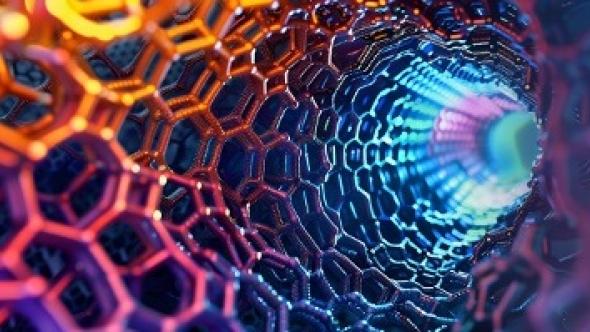
The conference is co-organized by the University of Namur, Belgium and Wuhan University of Technology, China and supported by Foshan Xianhu Laboratory and other organisms.
More info on the GCMC2025 website...
Preparatory courses
Top start for a revision period
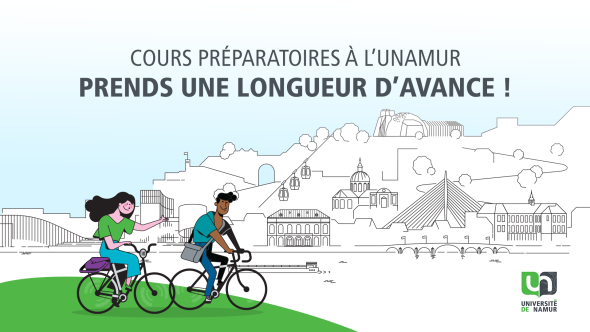
A program for every discipline
During late August and early September, UNamur offers rheto students preparatory courses tailored to their future training.
These revision sessions are specially designed to support students in their transition to university. By reinforcing their foundations in the key subjects of their future discipline, they enable them to approach their first year with confidence.
These preparatory courses are also an excellent opportunity to discover the campus, meet future classmates and familiarize themselves with the learning methods specific to higher education.
Preparation for the medical entrance exam
For students wishing to begin studying medicine, two sessions are also organized according to a specific timetable to prepare for the entrance exam.
1st MG-ERC conference
The Main-Group Elements Reactivity Conference (MG-ERC) is a new-born meeting, created to bring together researchers working in the fields of main-group, coordination and inorganic chemistry to talk about new concepts, ideas and trends in these vibrant fields, and to build connections and collaborations.
The philosophy of the meeting is to bring together researchers interested by main-group elements to talk about new reactions, mechanisms and reactivity.
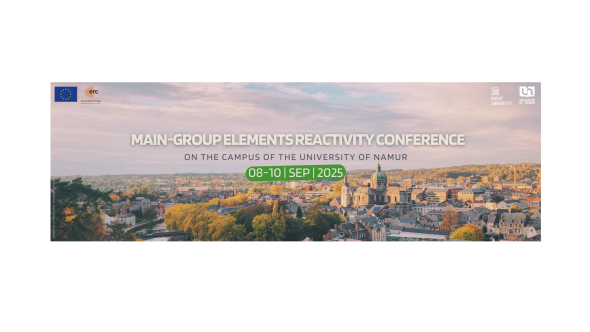
The scientific programme will include 14 academics presenting their work during keynote lectures, a series of oral communications presented by tenured professors, experienced researchers, PhD students or postdoctoral fellows, and two poster sessions.
